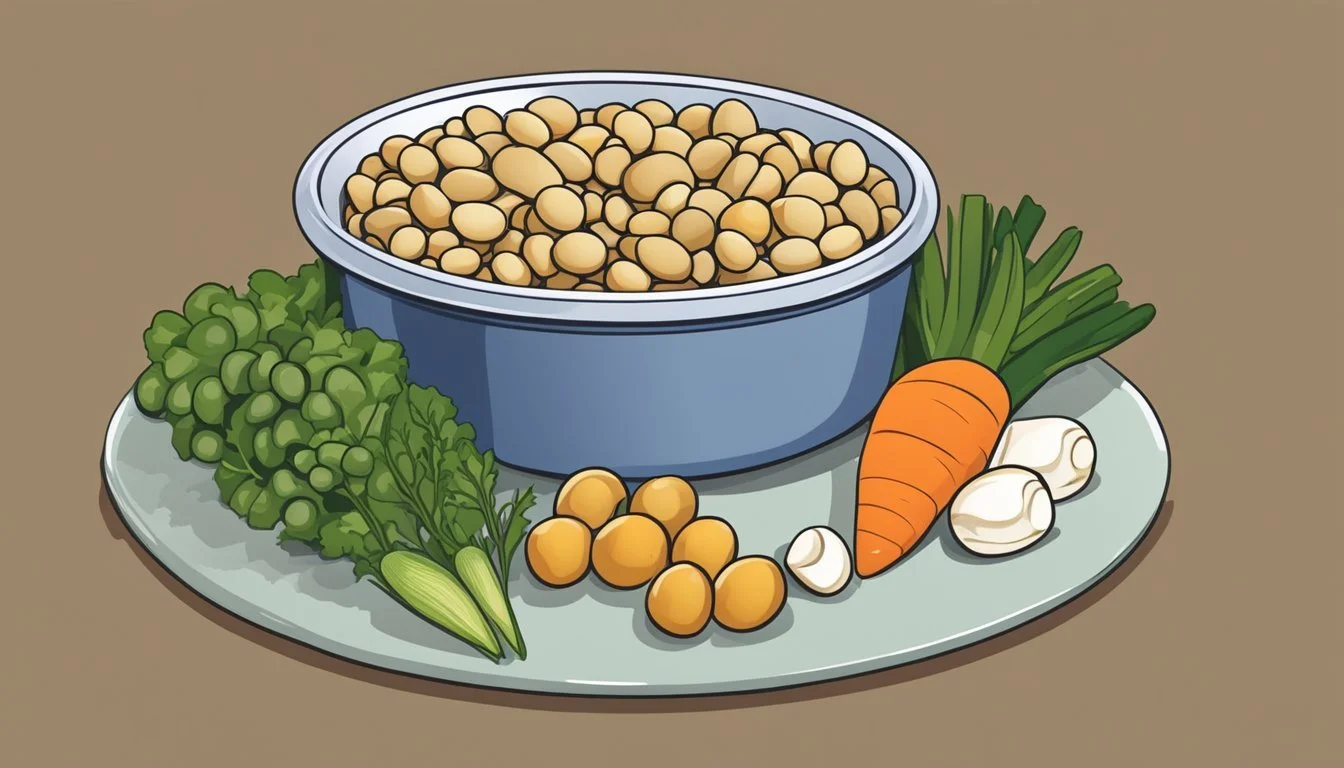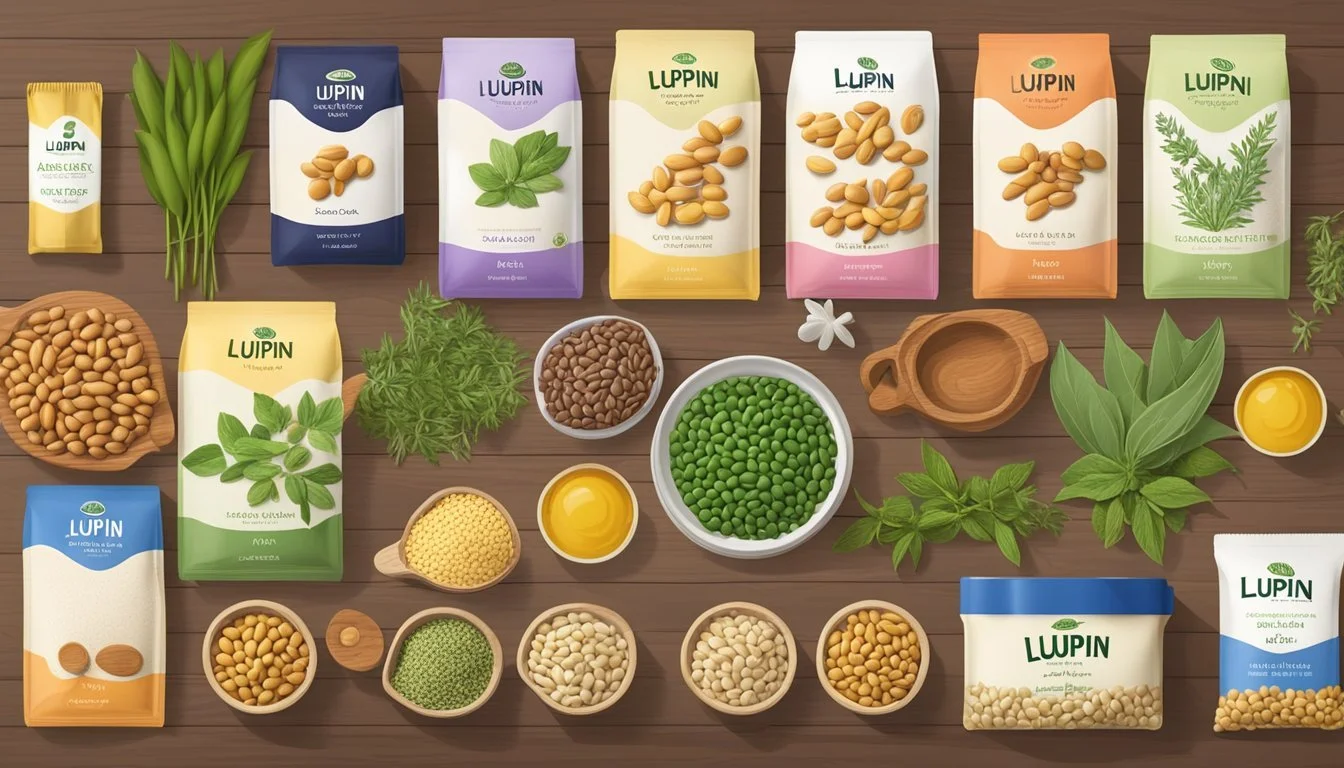Lupini Beans Substitutes
Top Alternatives for Your Recipes
For those looking to replace lupini beans in their meals, there are several excellent alternatives that can provide similar texture and nutritional benefits. Butter beans, also known as lima beans, are a versatile option that can be used cup-for-cup in recipes calling for lupini beans. These beans need soaking before cooking but offer a mild flavor that complements many dishes.
Another valuable substitute is fava beans, often called broad beans. Fava beans are slightly sweet and cheesy, lacking the bitterness sometimes found in lupini beans, making them a delightful addition to many recipes. Black soybeans are also a great low-carb option for those on a keto diet, offering similar uses as traditional beans in various dishes.
Understanding Lupini Beans
Lupini beans, also known as lupin beans, are versatile legumes packed with nutrients and well integrated into a variety of cuisines. They are appreciated for their nutritional value, culinary versatility, and cultural significance.
Nutritional Profile
Lupini beans are a nutritional powerhouse. They are rich in protein, making them an excellent choice for plant-based diets. Each serving typically contains all nine essential amino acids, necessary for muscle repair and overall health.
Additionally, they are high in fiber, which aids digestion and promotes a feeling of fullness. Lupini beans are also low in carbohydrates, making them suitable for low-carb diets. They contain essential vitamins and minerals such as calcium, potassium, and iron, contributing to bone health, electrolyte balance, and oxygen transport.
Culinary Uses
Lupini beans can be enjoyed in various forms and recipes. They are often consumed as a snack after being boiled and pickled, especially in Mediterranean countries like Italy, Greece, and Portugal. The beans add a nutty and slightly bitter flavor to dishes.
Culinary uses include adding them to salads for an extra protein boost, blending them into dips, or using them in stir-fried dishes. They can also be sautéed with garlic and olive oil, or incorporated into Mediterranean and Italian recipes such as stews and soups. They provide a versatile base for creativity in the kitchen.
Cultural Significance
Lupini beans hold a long-standing cultural importance, particularly around the Mediterranean. Ancient Romans cultivated them, recognizing their nutritional value and soil-enhancing properties. Over time, these beans have found their way into traditional dishes in Italy, Spain, and Latin America.
In Portugal and Greece, they are often served as a traditional appetizer during festivals and gatherings. Their sustainability also adds to their cultural relevance, as they contribute to soil health by fixing nitrogen and reducing the need for artificial fertilizers. These beans thus embody both historical significance and modern sustainability.
Preparing Lupini Beans
Preparing lupini beans involves soaking them to reduce bitterness and cooking them to achieve the desired texture. These steps ensure the beans are safe to eat and enhance their flavor.
Soaking and Brining
The soaking process is crucial for lupini beans as it helps to remove their natural alkaloids, which can make them toxic if not properly treated. Start by washing the beans under running water. Then, submerge them in a large pot with at least twice the volume of water to beans. Leave the beans to soak for 24-26 hours, changing the water twice a day.
After the initial soak, rinse the beans thoroughly. Prepare a brine solution with water and salt. Soak the beans in this brine for 5-14 days, continuing to change the water twice daily. This helps to leach out remaining alkaloids, reducing bitterness and making the beans safe to eat.
Cooking Methods
Once the soaking and brining processes are complete, it's time to cook the lupini beans. One popular method is boiling. Place the beans in a pot, cover them with water, and bring to a boil. Simmer for 1-2 hours until they reach a tender consistency.
Alternatively, use an air fryer to cook the beans. Toss the beans with olive oil and your choice of spices. Arrange them in the air fryer basket and cook at 380°F (193°C) for 10 minutes, stirring halfway through. This method delivers a crispy texture.
Lupini beans can be served as a snack, added to salads, or incorporated into other recipes for extra protein and flavor.
Substitute Profiles
Lupini beans are known for their high protein and fiber content, making them a versatile addition to various dishes. Fortunately, several substitutes can match these characteristics, such as chickpeas, edamame, and other beans and legumes. Each offers unique benefits and flavors that can complement different recipes.
Chickpeas
Chickpeas, also known as garbanzo beans, are a popular substitute for lupini beans. They are rich in protein and fiber, which helps maintain a balanced diet. Chickpeas are commonly used in Mediterranean cuisine, especially in dishes like hummus and falafel. Their mild, nutty flavor makes them ideal for salads, stews, and soups.
They can be mashed into spreads or combined with tahini, garlic, and lemon juice to make a creamy hummus. Chickpeas also have a meaty texture, making them suitable for vegetarian dishes that require a substantial base. Because of their versatility and nutritional benefits, they are a strong alternative to lupini beans in many recipes.
Edamame
Edamame are young soybeans often used in Asian cuisine. These beans are usually served in their pods but can be shelled for inclusion in various dishes. They are a great substitute for lupini beans due to their high protein and fiber content. Edamame has a slightly sweet, nutty flavor that can enhance the taste of salads, stir-fries, and snacks.
Steamed or boiled, edamame can be tossed with sea salt for a simple and nutritious snack. They are also used in soups, rice dishes, and even blended into dips similar to hummus. This versatility makes them a practical alternative for recipes requiring a legume with a firm texture and substantial nutritional value.
Other Beans and Legumes
Several other beans and legumes can replace lupini beans, including fava beans, black soybeans, and lima beans. Fava beans are slightly sweet and cheesy, making them ideal for dishes needing a unique flavor. Black soybeans are low-carb and fit well in keto-friendly diets, often used in soups and stews.
Lima beans offer a creamy texture and are often found in casseroles and soups. Kidney beans and lentils are also robust alternatives, boasting high protein and fiber content. Each type brings distinct flavors and textures to dishes while maintaining the nutritional benefits associated with lupini beans.
Incorporating Substitutes in Recipes
Lupini bean substitutes can easily be integrated into various dishes, offering similar nutritional benefits and flavors. These substitutes work well in salads and appetizers, main courses and sides, and snacks and dips, adding versatility to meal planning.
Salads and Appetizers
In salads and appetizers, butter beans and fava beans are excellent substitutes for lupini beans. Their textures and flavors complement fresh vegetables and light dressings.
Butter beans are creamy and soak up flavors well. They pair nicely with olive oil, lemon juice, and fresh parsley.
Fava beans are slightly sweet and can be used in cold salads mixed with tomatoes, cucumber, vinegar, and diced onions. For appetizers, try mixing fava beans with garlic and olive oil for a simple yet delicious spread.
Main Courses and Sides
For main courses and sides, lupini bean substitutes can enhance soups, stews, pastas, and rice dishes. Cannellini beans and soy beans are especially versatile.
Cannellini beans have a mild, nutty flavor and can be added to hearty soups and stews. They work well in pasta dishes, especially those with tomato-based sauces.
Soy beans provide a protein boost and adopt the flavors they are cooked with. They can be added to stir-frys or used in rice dishes. Adding a mix of garlic, olive oil, and lemon juice can round out the flavor profile.
Snacks and Dips
For snacks and dips, consider using chickpeas and peanut butter as substitutes for lupini beans. They provide similar textures and can be seasoned to taste.
Chickpeas can be roasted with olive oil and spices for a crunchy snack. They are also the main ingredient in hummus, blended with garlic, lemon juice, and tahini.
Peanut butter can be used in savory dips or spreads, offering a creamy alternative. Incorporate it with soy sauce, garlic, and vinegar for a tangy dip that pairs well with vegetables.
Employing these substitutes will ensure a seamless transition from lupini beans, while maintaining the desired taste and texture in each dish.
Health Considerations
Lupini beans are a nutritious choice, but when considering substitutes, it's essential to understand various health implications associated with dietary restrictions, bitterness, toxins, and nutritional profiles.
Dietary Restrictions
Many substitutes for lupini beans fit well into different dietary needs. Butter beans and fava beans are both excellent options for those following a gluten-free or plant-based diet. Edamame is another great choice packed with protein, making it suitable for low-carb and keto lifestyles.
One cup of cooked edamame contains about 18.4 grams of protein and 8 grams of fiber. This makes it an excellent choice for gut health. Substitutes should also be free from common allergens, ensuring they do not cause adverse reactions.
Managing Bitterness and Toxins
Lupini beans are known for their natural alkaloids, which can cause a bitter taste and toxicity if not prepared correctly. Butter beans and fava beans, on the other hand, do not have these issues. Soaking and rinsing are crucial steps in preparing lupini beans to remove bitterness and harmful substances.
For those who prefer a milder flavor, fava beans are slightly sweet and "cheesy," lacking the bitterness found in lupini beans. Substitute beans do not require extensive soaking or rinsing, making them convenient alternatives for those sensitive to bitterness.
Nutritional Adjustments
When substituting lupini beans, it's important to consider the nutritional profile. Lupini beans are rich in protein, fiber, and low in net carbs, making them ideal for low-carb and keto diets. Fava beans also offer substantial nutritional benefits with a high vitamin B and vitamin C content.
Pinto beans, another viable substitute, provide more than 33% of the daily value (DV) of folate and are also packed with magnesium, copper, and iron. Butter beans provide a balanced mix of carbohydrates and protein, ensuring that the dietary goals of those following low-carb or plant-based diets are met effectively.
Alternatives Beyond Beans
When looking for substitutes for lupini beans, grains, seeds, vegetables, and nuts offer diverse and accessible options. These alternatives can provide similar textures and nutritional benefits.
Grains and Seeds
Grains like quinoa, barley, and rice possess rich nutrient profiles and versatile textures. Quinoa is a complete protein, making it excellent for plant-based diets. It adds a slight crunch and absorbs flavors well. Barley is chewy and adds a hearty consistency to soups and stews. Rice—particularly wild and brown varieties—offers a firmer texture and nutty flavor, suitable for various dishes.
Sunflower seeds bring a crunchy texture and nutty flavor. They can be sprinkled on salads or incorporated into batters for a nutty profile. These seeds are rich in nutrients like magnesium and vitamin E, enhancing the nutritional content of meals.
Vegetables and Nuts
Incorporating vegetables such as zucchini, cauliflower, and eggplant provides a fresh alternative to beans. Zucchini, with its mild flavor, can be spiralized as a pasta substitute or diced in salads. Cauliflower is incredibly versatile: it can be riced, mashed, or roasted, adapting well to various recipes. Eggplant offers a meaty texture, making it a substantial addition to stews and casseroles.
Peanuts and tomatoes also serve well. Peanuts, whether whole or butter-form, introduce a rich, creamy consistency and a high protein content. Tomatoes, especially sun-dried, add a chewy texture and intense flavor, enhancing dishes with their umami qualities.
By integrating these varied ingredients into meals, cooks can maintain nutritional benefits while exploring new textures and flavors.





